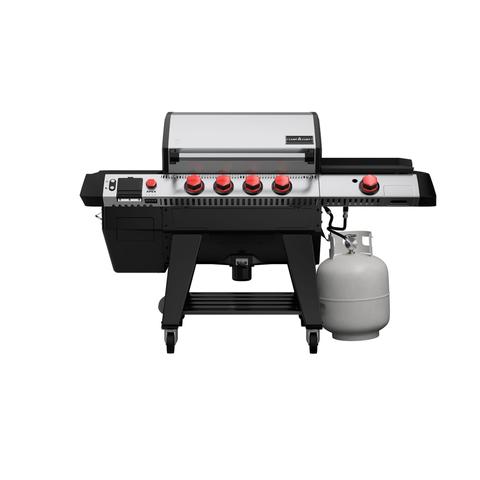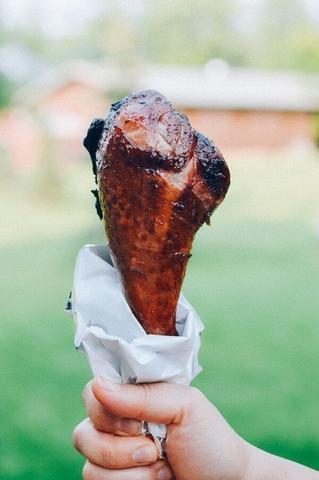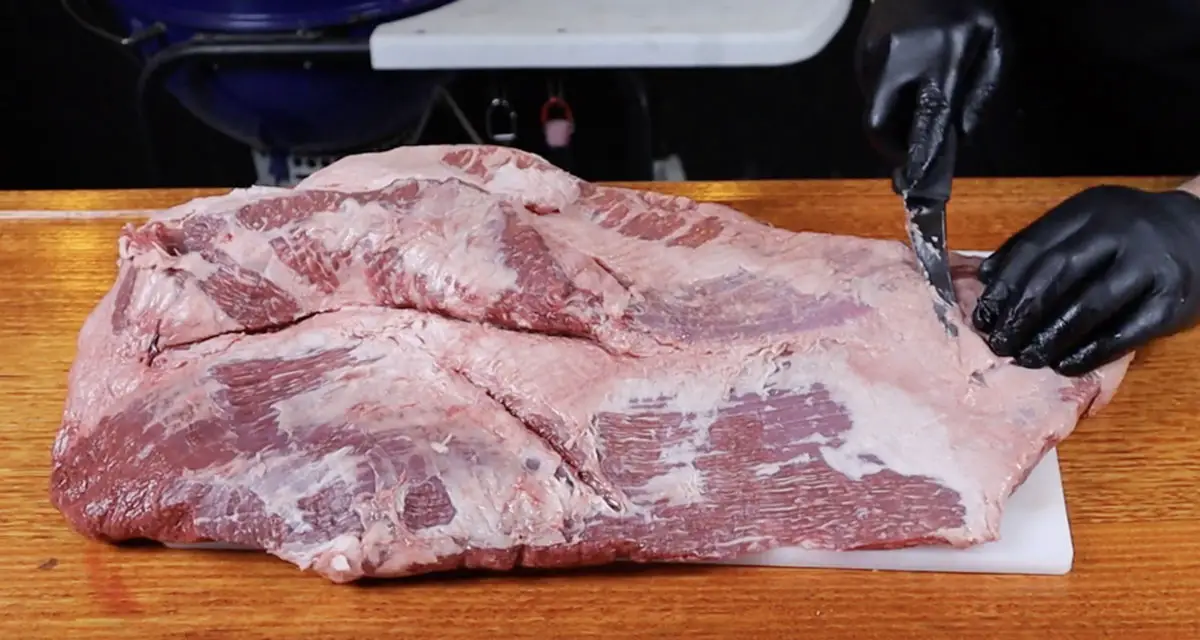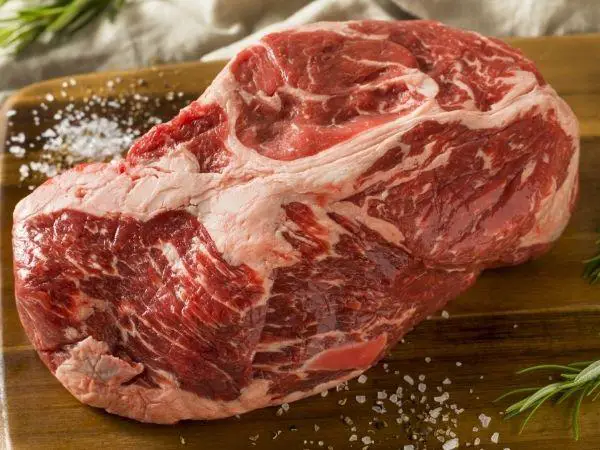
“Brisket vs Chuck Roast: A Meaty Battle Unveiled! Discover the key differences and delectable nuances of these popular cuts. From tenderness to flavor profiles, we delve into the ultimate showdown between brisket and chuck roast. Join us to explore which cut reigns supreme on your plate!”
Brisket vs Chuck Roast: The Differences Explained

Brisket and chuck roast are two popular cuts of beef, often used for smoking. While they may have a similar taste and texture when smoked, there are distinct differences between the two. Firstly, brisket is taken from the breast section of the cow, under the first five ribs. It is known as the toughest cut of meat on the animal and consists of two muscles – the point and the flat. On the other hand, chuck roast is a sub-primal cut taken from the chuck primal, which includes the neck, shoulder-blade, and upper arm of the cow.

In terms of size, brisket can weigh anywhere from 8-20 pounds, while a chuck roast typically weighs around 2-2.5 pounds. This size difference contributes to the cost disparity between the two cuts. Although their prices per pound may be similar, a whole packer brisket will always have a higher upfront cost due to its larger size. Additionally, in terms of flavor, chuck roast has a more forward beefy taste compared to brisket due to its fat distribution.
What is Brisket?
Brisket is a popular cut of beef taken from the breast section of the cow, specifically under the first five ribs. It is known for being the toughest cut of meat on the animal, as it supports approximately 60% of the cow’s body weight. A whole beef brisket consists of two muscles – the point and the flat – separated by a layer of fat. It can weigh anywhere from 8 to 20 pounds.
Due to its tough nature, brisket requires slow cooking methods, such as smoking or braising, to achieve tender and flavorful results. When properly prepared, brisket is known for its rich taste and melt-in-your-mouth texture. It is often considered one of the best cuts of beef for smoking.
What is Chuck Roast?

Chuck roast is a sub-primal cut of beef taken from the chuck primal of the cow. It is also sometimes referred to as the clod or forequarter of the animal, which includes the neck, shoulder-blade, and upper arm. The chuck roast is essentially an extension of the beef rib primal, where beef rib steaks come from. Butchers separate the chuck primal from the beef rib primal at rib bones 5/6 because the actual ribeye muscle only starts to show up around rib 4.
The chuck roast can be further fabricated into several cuts, including the chuck roast itself. The size of these roasts can vary depending on the butcher, but typically from a chuck eye roast, you can get around 6-8 two-pound chuck roasts. This means that from a single steer, we can obtain 12-16 chuck roasts.
The Major Differences Between Brisket and Chuck Roast
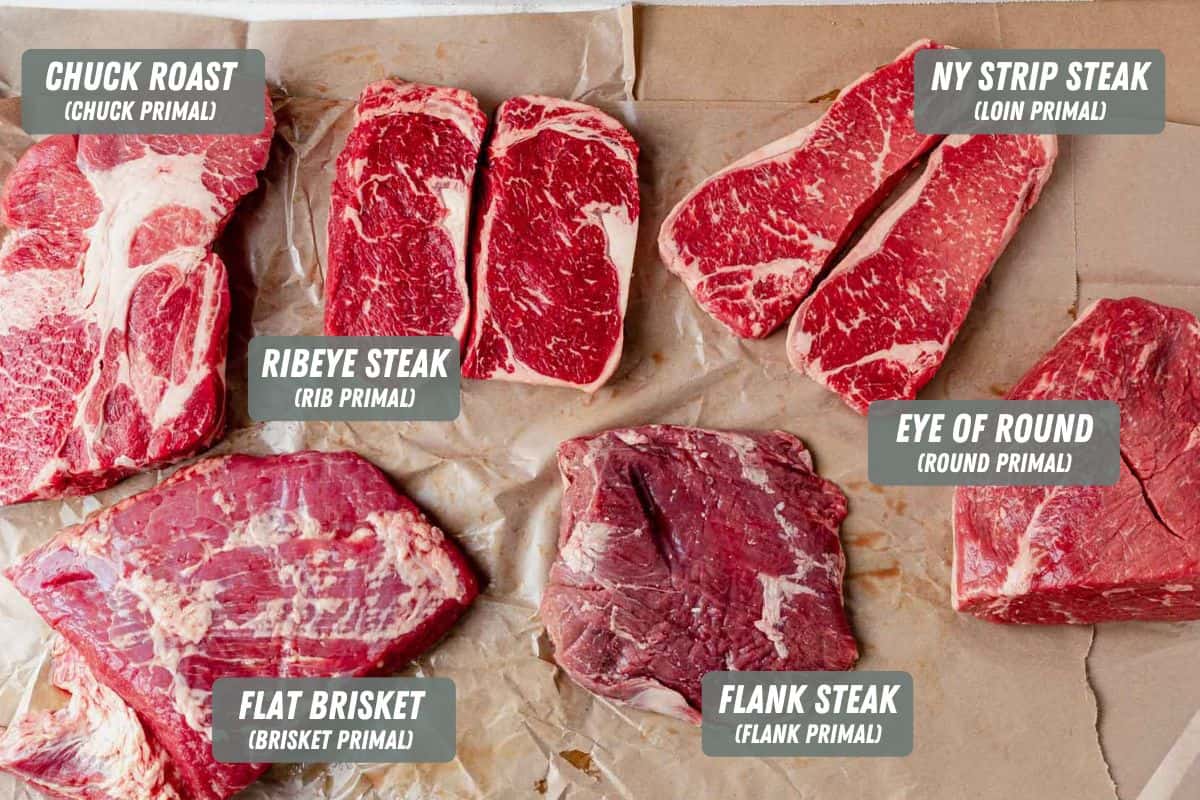
Brisket and chuck roast are two popular cuts of beef that are often confused with each other. While they can both be smoked, they have distinct differences in terms of anatomical location, size, and cost. The brisket is taken from the breast section of the cow and is known as the toughest cut of meat on the animal. It consists of two muscles, the point and the flat, separated by a seam of fat. A whole beef brisket can weigh anywhere from 8-20lbs. On the other hand, chuck roast is a sub-primal cut taken from the chuck primal, which includes the neck, shoulder-blade, and upper arm. It is an extension of the beef rib primal and can be further fabricated into several cuts.
In terms of pricing, brisket and chuck roast are similar when looking at cost per pound. However, the upfront cost of a brisket will always be higher due to its larger size compared to a single chuck roast. The taste also differs between these cuts. Chuck roast has a more forward beefy flavor while brisket has a distinct richness due to its subcutaneous fat. When smoked like a brisket, chuck roast can resemble brisket flat slices but lacks the same level of richness. Overall, these differences make each cut unique in its own way.
The Price Difference
Brisket and chuck roast are similar in terms of pricing, especially when considering the cost per pound. The price can vary depending on location and trimming preferences. In some areas, choice grade chuck roasts are readily available at a reasonable price, while packer briskets may be harder to find or more expensive. For example, a USDA Choice Angus Chuck roast may cost around $4.97 per pound, while a USDA Choice Grade brisket could cost around $3.98 per pound. However, it’s important to note that the price per pound of brisket can be misleading because of the need for trimming. A 12-13 lb brisket may result in 2-3 lbs of trim, bringing the true cost per pound close to $4.77.
One major difference between brisket and chuck roast is their size. A whole packer brisket can weigh anywhere from 8-20 lbs, while a chuck roast typically weighs around 2-2.5 lbs. This size difference affects the upfront cost of each cut, with brisket being more expensive due to its larger size. For example, if you bought a 12 lb choice grade brisket at $3.98 per pound, your initial cost would be $47.76. However, after trimming off 2 lbs of edible meat, the true cost per pound would be around $4.77 or a total of $57.24 for the brisket.
The size and price difference between brisket and chuck roast is why some refer to chuck roast as “The Poor Man’s Brisket.” A singular chuck roast is significantly cheaper and smaller compared to a whole packer brisket. This makes it an ideal option for those who want to enjoy beef brisket but don’t want to consume a large quantity of meat. The chuck roast also has a more forward beefy flavor, similar to a ribeye steak, due to its fat distribution. While chuck roast can be smoked like brisket or cubed up for burnt ends, it may not achieve the same level of richness and texture as true brisket burnt ends.
Size of the Meat
The size of the meat is one major difference between brisket and chuck roast. A whole packer brisket can weigh anywhere from 8 to 20 pounds, while a chuck roast typically weighs around 2 to 2.5 pounds. This size difference is due to the anatomical location of these cuts on the cow. The brisket is taken from the breast section under the first five ribs, while the chuck roast is taken from the neck, shoulder-blade, and upper arm.
In terms of pricing, beef brisket and chuck roast are relatively similar in cost per pound. However, it’s important to consider that the upfront cost of a brisket will always be higher due to its larger size. For example, a 12-pound choice grade brisket may cost $3.98 per pound, resulting in a total price of $47.76. After trimming off around 2 pounds of edible meat, the true cost per pound becomes $4.77 or $57.24 for the brisket. On the other hand, a singular chuck roast is much cheaper and smaller compared to a whole brisket.
When it comes to taste, some people prefer the more forward beefy flavor of chuck roast compared to brisket. Chuck roast has better intramuscular fat distribution compared to brisket, which tends to have subcutaneous fat. However, when trimmed properly, brisket can have a rich and appetizing yellow fat cap that adds flavor during smoking or cooking. While chuck roast can be smoked like brisket and result in similar taste and texture, it lacks the same level of richness as true brisket burnt ends.
Taste Differences
Taste Differences:
Brisket and chuck roast have distinct taste differences. Chuck roast has a more forward beefy flavor, reminiscent of what people typically expect when they eat beef. The chuck eye roast, which is an extension of the rib primal, can even be compared to the flavors of a ribeye steak. This is due to the distribution of fat in the meat, with chuck roast having better intramuscular fat distribution. On the other hand, brisket has a unique taste that comes from its subcutaneous fat. When trimmed properly, the rendered fat creates a rich and appetizing flavor. However, chuck roast lacks a fat cap and cannot achieve this same level of richness in taste.
Additionally, when smoked like a brisket, chuck roast can be compared to the flat slices of brisket. It does not reach the same level of richness as true brisket burnt ends, although some people do cube up chuck roast to smoke it like burnt ends for added flavor and texture variety. Overall, while both cuts offer delicious flavors when smoked or cooked properly, they have their own distinct taste profiles that cater to different preferences.
In conclusion, both brisket and chuck roast offer delicious flavors and tender textures when cooked properly. While brisket is renowned for its smoky taste and melt-in-your-mouth tenderness, chuck roast provides a well-marbled cut that is versatile and budget-friendly. Ultimately, the choice between the two depends on personal preference and cooking style.
Learn More About Grilling
If you want to learn more about grilling, check out these other helpful resources!

